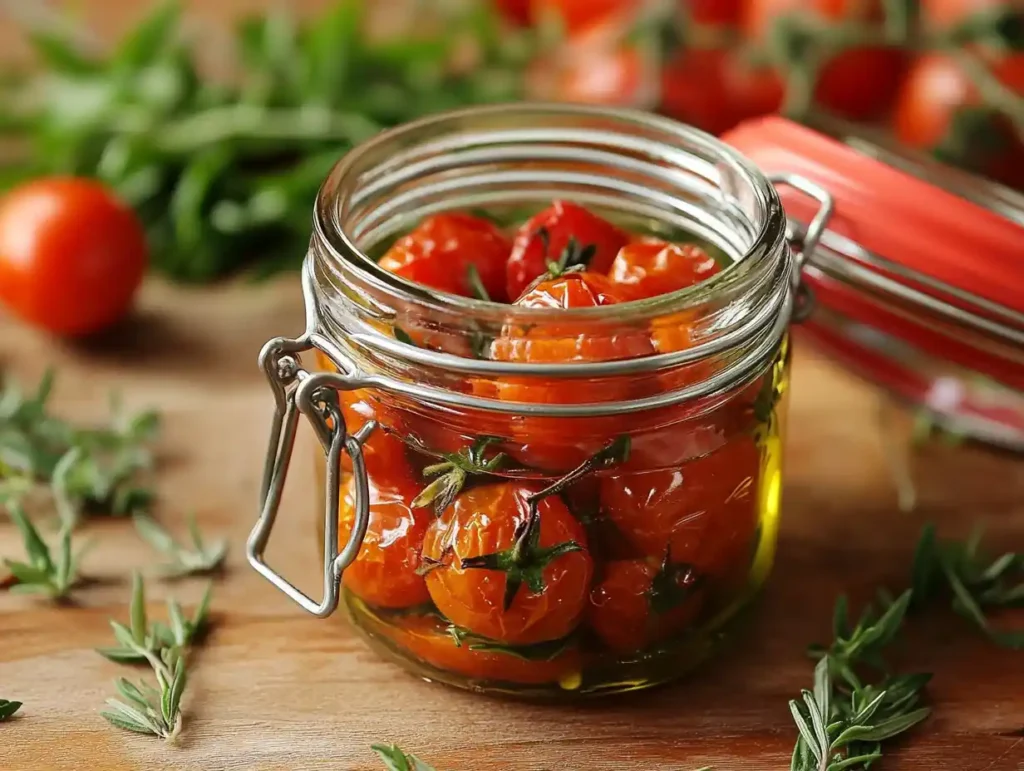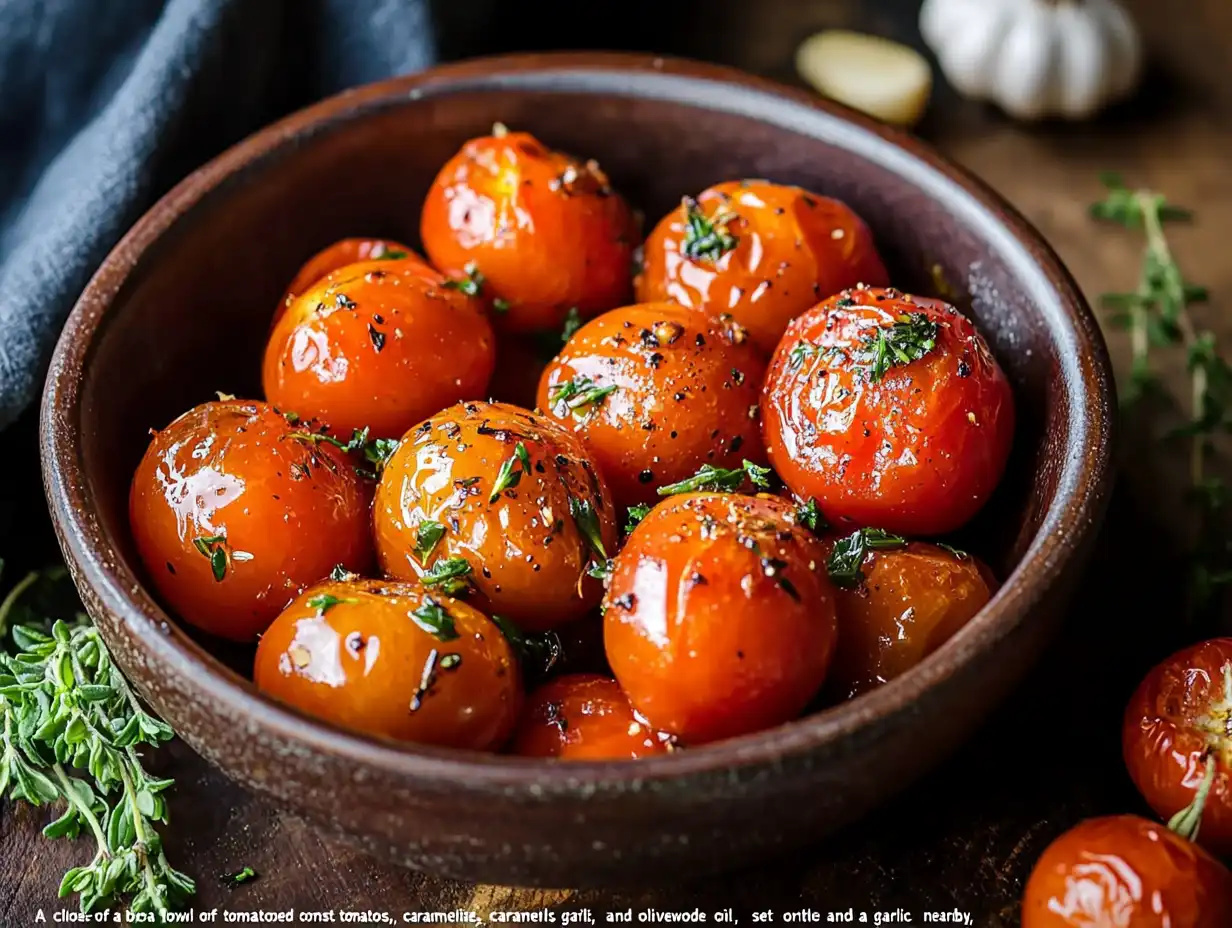Roasted tomatoes are a culinary game-changer for pasta sauces, bringing depth, sweetness, and a smoky flavor that transforms a simple dish into an extraordinary one. Whether you’re a seasoned chef or a beginner in the kitchen, mastering this technique will elevate your pasta sauces to a new level of deliciousness. In this guide, we’ll explore everything from selecting the right tomatoes to roasting them to perfection and incorporating them into your pasta sauce. Let’s dive into this flavorful journey!
Choosing the Right Tomatoes
Best Tomato Varieties for Roasting
When selecting tomatoes for roasting, opt for varieties that balance sweetness and acidity. Roma tomatoes are a top choice for their meaty texture and low water content. Cherry tomatoes bring a burst of sweetness, while heirloom varieties add a rich, complex flavor profile.
Fresh vs. Canned Tomatoes: Pros and Cons
- Fresh Tomatoes: Offer a vibrant taste and natural sweetness but require careful selection for ripeness.
- Canned Tomatoes: Convenient and often more affordable, but may lack the intensity of fresh flavors after roasting.
Factors to Consider: Ripeness and Seasonality
For the best results, choose ripe tomatoes in peak season. Out-of-season tomatoes can be bland and watery, making it harder to achieve the desired flavor depth.
Prepping Tomatoes for Roasting
Cleaning and Slicing Techniques
Begin by rinsing the tomatoes under cold running water to remove dirt or pesticides. Pat them dry with a clean kitchen towel. Depending on their size and variety:
- Roma or plum tomatoes: Slice them in half lengthwise.
- Cherry tomatoes: Keep them whole or slice them in half for quicker roasting.
- Heirloom tomatoes: Cut into thick slices or wedges to preserve their structure during roasting.
Removing the skin is optional, as it softens and adds texture after roasting. However, if you prefer a smoother sauce, blanch and peel the tomatoes before slicing.
How to Remove Seeds and Cores
While not mandatory, removing seeds and cores can enhance the sauce’s texture and reduce bitterness. Use a small spoon or your fingers to scoop out the seeds. Trim away any tough cores with a paring knife.
Tip: Save the seeds and juices for other recipes, like broths or soups, to avoid waste.
Seasoning Tips: Salt, Oil, and Herbs
Proper seasoning elevates the tomatoes’ natural flavors. Drizzle them generously with olive oil, sprinkle with coarse sea salt, and season with freshly ground black pepper. Add aromatics like minced garlic, oregano, or thyme for a Mediterranean touch.
For a smoky flavor, toss in paprika or smoked chili flakes before roasting. A pinch of sugar can balance overly acidic tomatoes.
Roasting Tomatoes Perfectly

Oven Settings and Temperatures
Preheat your oven to 375°F (190°C) for slow roasting, which draws out the tomatoes’ natural sweetness. For a quicker roast with a slightly charred finish, set the oven to 425°F (220°C).
Baking Sheet Preparation and Arrangements
Line a baking sheet with parchment paper or foil for easy cleanup. Arrange the tomatoes cut-side up in a single layer, ensuring they don’t overlap. This allows even caramelization.
Optimal Roasting Time for Flavor
- Cherry tomatoes: Roast for 20–25 minutes until they burst and release their juices.
- Roma or plum tomatoes: Roast for 30–40 minutes until wrinkled and lightly browned around the edges.
- Heirloom tomatoes: Roast for 40–50 minutes for a rich, concentrated flavor.
Keep an eye on them to avoid burning, which can make the tomatoes bitter.
Common Mistakes to Avoid
- Overcrowding the pan: This traps moisture and prevents proper caramelization.
- Using too little oil: Tomatoes may dry out instead of becoming juicy and flavorful.
- Skipping the seasoning: Roasting alone won’t amplify the flavors without salt and herbs.
Incorporating Roasted Tomatoes into Sauce
Blending vs. Mashing: Texture Preferences
Decide how you want your sauce:
- Smooth Sauce: Blend the roasted tomatoes with an immersion blender for a silky consistency.
- Chunky Sauce: Use a fork or potato masher to crush the tomatoes, leaving small chunks for texture.
Both methods retain the roasted tomatoes’ smoky flavor.
Combining Roasted Tomatoes with Other Ingredients
Sauté onions, garlic, and chili flakes in olive oil until fragrant. Add the roasted tomatoes and simmer to meld flavors. For a richer sauce, incorporate a splash of red wine or vegetable stock.
Pairing with Herbs, Spices, and Aromatics
Fresh basil, parsley, or thyme work wonders in tomato sauces. For bolder flavors, experiment with:
- Italian-style: Oregano, rosemary, and crushed fennel seeds.
- Spicy options: Red chili flakes or cayenne pepper.
- Creamy variations: Stir in heavy cream, ricotta, or grated Parmesan cheese.
Recipes: Classic Marinara, Arrabbiata, and Vodka Sauce
- Marinara Sauce: Combine roasted tomatoes with garlic, olive oil, and basil for a simple yet flavorful sauce.
- Arrabbiata Sauce: Add roasted tomatoes, garlic, and red chili flakes for a spicy kick.
- Vodka Sauce: Blend roasted tomatoes with cream, vodka, and Parmesan for a luxurious texture.
Storage and Reuse Ideas

Freezing Roasted Tomatoes
Roasted tomatoes freeze exceptionally well, making it easy to enjoy their rich flavors year-round. Allow them to cool completely after roasting, then transfer to an airtight container or resealable freezer bag. Label the bag with the date and freeze for up to 6 months.
Freezing tips:
- Use freezer-safe glass jars for better taste retention.
- Portion the tomatoes into smaller servings to avoid thawing the entire batch.
Best Containers for Storage
When storing roasted tomatoes in the fridge, opt for glass or BPA-free plastic containers with tight-sealing lids. Roasted tomatoes can last up to 5 days when refrigerated. To extend their shelf life, submerge them in olive oil before sealing.
Creative Ways to Use Leftovers
Roasted tomatoes aren’t just for pasta sauce! Here are some other creative uses:
- Pizza topping: Spread roasted tomatoes over your favorite pizza base for a smoky, tangy flavor.
- Sandwiches and wraps: Layer them in a veggie sandwich or add to a grilled cheese for a gourmet twist.
- Soup base: Blend roasted tomatoes with vegetable stock for a quick tomato soup.
- Bruschetta: Spread roasted tomatoes on toasted bread with fresh basil and balsamic glaze.
- Shakshuka: Combine with sautéed onions and peppers, then crack eggs on top for a hearty breakfast.
Health Benefits of Roasted Tomatoes in Pasta Sauces
Roasting tomatoes doesn’t just amplify their flavor—it also enhances their nutritional profile, making your pasta sauces both delicious and wholesome.
Rich in Antioxidants: Tomatoes are a great source of lycopene, an antioxidant that becomes more bioavailable when exposed to heat. This compound may help reduce the risk of heart disease and certain cancers.
Packed with Vitamins: Roasting preserves essential nutrients like vitamins C, A, and K, which support immune health, vision, and bone strength.
Low in Calories, Big on Flavor: For those watching their calorie intake, roasted tomatoes provide a guilt-free way to add depth and richness to sauces without relying on heavy creams or butter.
Boosts Digestive Health: The fiber content in tomatoes, particularly when their skins are included, supports digestion and keeps you feeling full longer.
Incorporating roasted tomatoes into your pasta sauce isn’t just a flavor upgrade—it’s a step toward a healthier, more nutrient-packed meal.
Frequently Asked Questions
What Are the Best Oils for Roasting Tomatoes?
Extra virgin olive oil is the best choice for roasting tomatoes, as it enhances their natural sweetness. For a more neutral flavor, you can use avocado or grapeseed oil. Avoid oils with low smoke points, such as butter, to prevent burning.
Can You Roast Tomatoes Ahead of Time?
Absolutely! Roasted tomatoes can be made a day or two in advance and stored in the refrigerator. Reheat them gently in a skillet before using in sauces or other dishes to revive their flavor.
How Do You Fix Overly Bitter Roasted Tomatoes?
If your roasted tomatoes taste bitter, it could be due to overcooking or using underripe tomatoes. To fix this:
- Add a pinch of sugar to balance the bitterness.
- Incorporate a splash of balsamic vinegar for sweetness and complexity.
- Blend the tomatoes with a small amount of cream or butter to mellow the sharp flavors.
Are There Substitutes for Fresh Tomatoes in Roasting?
Yes, canned whole tomatoes can be used as a substitute when fresh tomatoes are unavailable. Drain them well, pat dry, and proceed with roasting as you would with fresh tomatoes. The flavor may differ slightly, but roasting still enhances their sweetness and depth.
How Do You Avoid Watery Roasted Tomatoes?
Watery tomatoes can dilute the flavor of your sauce. To prevent this:
- Select low-moisture varieties like Roma or plum tomatoes.
- Roast at a higher temperature (425°F/220°C) to evaporate excess moisture.
- Avoid overcrowding the pan, which traps steam and prevents proper caramelization.
Conclusion
Roasting tomatoes for pasta sauce is a simple yet transformative culinary technique. The concentrated sweetness, smoky undertones, and rich texture make roasted tomatoes a versatile ingredient in countless dishes. By following this guide, you’ll not only master the art of roasting tomatoes but also learn to incorporate them into your favorite pasta sauces and beyond. Whether you’re making a quick weeknight dinner or preparing a gourmet meal, roasted tomatoes are sure to impress.
If you enjoy making meals from scratch, why not elevate your dishes further? Pair your roasted tomato sauce with the rich flavors of our Mac and Cheese with Ground Beef. Additionally, explore the art of creating hearty broths with our guide on Soup Bones. Finally, for a sweet finish, don’t miss the timeless charm of our French Apple Pie.

